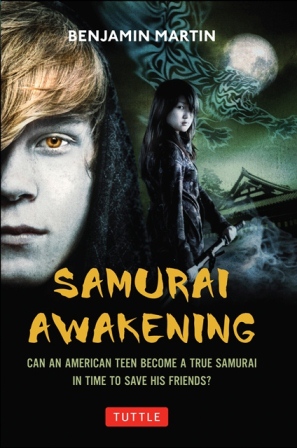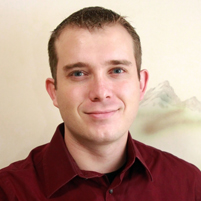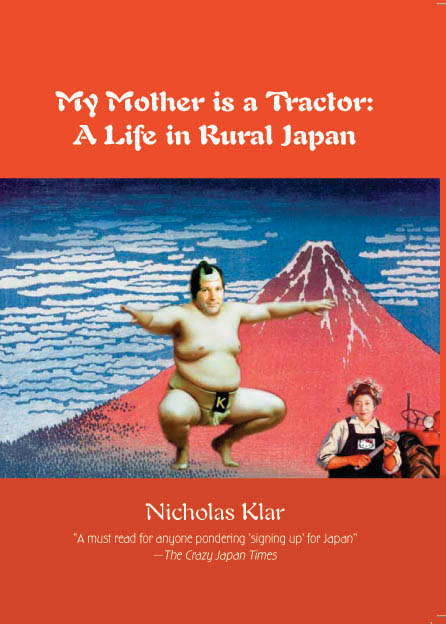Gemma Vidal (Okayama-ken, 2010-12) is a recently returned JET seeking work in licensing/merchandising (if it’s within the publishing industry, even better!). You can usually find her in her little web spaces Gem in the Rough and Peachy Keen (her JET adventures) or training with San Jose Taiko. If you know of any authors/aspiring writers you’d like to see featured in JET Alum Author Beat, just contact Gemma at gem.vidal [at] gmail.com
- Congratulations are in order to Will Ferguson (Nagasaki-ken, 1991-94), author of Hitching Rides With the Buddha (f/k/a The Hitchhiker’s Guide to Japan), who was awarded the esteemed 2012 Scotiabank Giller Prize for his novel 419. You can check out the announcement on the Scotiabank Giller Prize website and read more about his novel and other works on Will’s own website. Congratulations again, Will!
- What better way to warm up from the cold weather than a cup of sake! If you’re a fan of sake and live in Japan, check out John Gauntner’s (author of The Sake Handbook) annual Sake Professional Course 2013. It is a 5-day educational course which includes classroom sessions and visiting sake breweries in the Osaka/Kyoto/Kobe area. For more information about the schedule and registration, please visit the SPCJapan website. You can also download a free version of Sake: The Least You Need To Know, a quick start guide to sake here
- Suzanne Kamata (Tokushima-ken, 1998-90), author of Losing Kei and fiction editor of Literary Mama announced that her latest Young Adult novel, Gadget Girl: The Art of Being Invisible will be published by GemmaMedia (cool name) in May 2013! Gadget Girl follows the life of 14-year old Aiko Cassidy and her dream to become a manga artist. The story won the SCBWI Magazine Merit Award in Fiction. You can check out the book on her website or through Amazon, Powells, and Indiebound.
- Japanamerica’s Roland Kelts (Osaka-shi, 1998-99) will lead a presentation titled, “Japan’s New Anti-Piracy Law and the Online Media Debate” with media lawyer David B. Hoppe and music journalist Steve McClure on November 14th.
- Attention NY residents! James Kennedy (Nara-ken, 2004-06), author of The Order of Odd-Fish is holding a signing on November 27th at the Pittsford Barnes & Noble in Rochester at 7PM and presenting new material on November 28th at Writers and Books (also in Rochester with a $5 fee). Details can be found on James’ website and this site for the November 28th event. Go and show your support!
- Want a chance to win a free book written by one of our own? Benjamin Martin (Okinawa-ken, 2008-Present), publisher of the More Things Japanese blog is giving away two personalized copies of his new book, Samurai Awakenings which was just released last month! The giveaway ends on November 30th, so go to Goodreads and sign up! You can read JETwit’s own brief interview with Benjamin about his book.
- Mie-ken JET alumni Laura Popp’s fantasy novel, Treasure Traitor is out! Here’s the summary on Amazon’s website to give you a taste of the story:
“In a universe torn by war, two governments vie for power: the elemental Kingdom and the telepathic Hierarchy. Hierarchy women with animal bonds think nothing of sacrificing their beasts’ lives to protect themselves. Except sixteen-year-old Renagada. The bond with her carrion-eater bird Acha is two-sided, and she knows his mind as much as he knows hers. When Rena overhears her parents plotting to kill Acha because of superstition, she must leave her fiancé and home of sheltered luxury to flee with Acha into the desert. Peril awaits them at every turn, and someone is tracking them…”
And that’s all for this round of the Author Beat!
Justin’s Japan: Interview with ‘Manga! Manga! The World of Japanese Comics’ author Frederik L. Schodt

“I grew up overseas in several different countries, and I’ve always enjoyed different cultures. And for me, that was exactly the way Japan appeared: it was always interesting, and it still is always interesting. There’s always things to learn.” (Courtesy of Stone Bridge Press)
By JQ magazine editor Justin Tedaldi (CIR Kobe-shi, 2001-02) for Examiner.com. Visit his Japanese culture page here for related stories.
Frederik L. Schodt first traveled to Japan in 1965 as a teenager, and since the early ’80s he has written numerous books about Japanese culture both popular and obscure, including the landmark Manga! Manga! The World of Japanese Comics, the first substantial English-language work on the art form. Schodt also has translated a wealth of books and manga series (many by his late friend, the “god of comics” Osamu Tezuka), and in 2009 he was awarded the Order of the Rising Sun, Gold Rays with Rosette for his contribution to the introduction and promotion of Japanese contemporary popular culture.
Out Nov. 13 is his newest book, Professor Risley and the Imperial Japanese Troupe, the true story of “Professor” Richard Risley Carlisle, an American who introduced the Western circus to Japan in 1864, and in turn gave many Americans their first glimpse of the East when he took his “Imperial Japanese Troupe” of acrobats and jugglers on a triumphant tour of North America and Europe, stirring a fascination with all things Japanese that, Schodt says, eventually led to today’s boom in manga and anime.
In part one of this exclusive, wide-ranging interview, I spoke with Schodt about his fascination with the late 19th century, his relationship with contemporary pop culture icons like George Lucas, and the story behind his middle initial, which is colorfully connected to the events of the film Argo.
It’s been more than five years since the release of your last book, The Astro Boy Essays. What else have you been up to since then?
I’ve actually gone through this and done some rough calculations, but it seems to take me about five years between books. I’ve been doing this same sort of thing that I always do, which is a mix of writing books and translating and then also working as a conference interpreter. For different periods, the weight and the ratio changes, but the mix is pretty much the same. And I’ve been working on the book of Professor Risley and the Imperial Japanese Troupe, I guess, for the last two or three years doing research. But it’s been a lot of fun, I have to say—it’s been one of the most fun books I’ve worked on in a long time.
What are some developments in manga/anime/Japanese pop culture in the U.S. that you feel has moved in a positive direction? At the same time, what things are you a bit critical of in the way they were handled?
I think it’s wonderful that a popular culture from another country such as Japan developed such a large fanbase in the United States, and that was a real surprise to me. I always hoped that people would take more notice in Japanese manga and anime, because I thought they were such an interesting manifestation of popular culture that had been long overlooked in the United States. But I never imagined that both of those entertainment media would become so big and so entrenched in the United States in terms of the fanbase, so that’s been wonderful to see.
It seems like the biggest development in recent years has been the cosplay phenomenon—that’s become a real part of the lingo here now.
That’s right. And I think cosplay in the United States is a little different, and in fact I think the whole fandom in the United States has assumed sort of American characteristics, so it’s developing on its own in new directions, and it’s kind of wonderful to see. I go to some of the larger cons every once in a while, and I really enjoy seeing how young people are interpreting this cultural phenomenon developed in Japan, although I have to say that cosplay is really indirectly inspired by the masquerades and the costume competitions that started in the United States in the sci-fi comic book community. So it’s very interesting. It’s this sort of cultural interchange that I’ve always been fascinated by where you have these two countries that are kind of reflecting each other and sending influences back and forth to each other, and interpreting a phenomenon in slightly different ways.
For the complete interview, click here.
JET Alum Will Ferguson Wins Canadian Lit Award
From the Associated Press via the New York Times:
On Oct. 30, celebrated JET alum author Will Ferguson (Nagasaki-ken, 1991-94) won the Scotiabank Giller Prize, a $50,000 Canadian fiction award, for a his novel 419, about a family’s entanglement in a Nigerian email scam.
A kilt-wearing Ferguson pulled out a flask during his acceptance speech and raised a toast to the written word. Presenters included Sex and the City actress Kim Cattrall.
The Giller, which honors the best in Canadian fiction, was created in 1994 by businessman Jack Rabinovitch in memory of his late wife, literary journalist Doris Giller.
Tuesday’s ceremony was broadcast by the Canadian Broadcasting Corp. For a CBC video of Ferguson on writing 419 and being a Giller finalist, click here.
WIT Life #217: David Mitchell’s Japan connection
WIT Life is a periodic series written by professional Writer/Interpreter/Translator Stacy Smith (Kumamoto-ken CIR, 2000-03). She starts her day by watching Fujisankei’s newscast in Japanese, and here she shares some of the interesting tidbits and trends together with her own observations.
Last week I had the chance to see English author David Mitchell at Symphony Space. He appeared with several actors who read short stories he had selected as some of his favorites, and then Campbell Scott read a sample from his novel Cloud Atlas. Mitchell was alternatively humorous and self-deprecating, and he offered many insights into what had grabbed him about the short stories he had picked as well as the way he pursues his craft.
Cloud Atlas is actually composed of six interlocking novellas that span centuries and characters, and they are connected by the theme of souls being reborn in different places and times. Cloud Atlas is challenging to read at times, but really fascinating stuff so totally worth it. The movie version is being released later this week, and I’m very eager to see how much Read More
Justin’s Japan: New York Comic Con Welcomes ‘Sakuran’ Creator Moyoco Anno
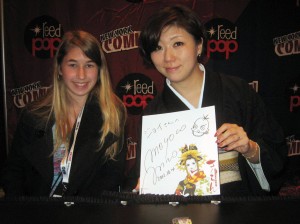
Manga author Moyoco Anno with New York Comic Con attendee Joy Charbonneau of Pacifica, CA, Oct. 14, 2012. (Justin Tedaldi)
By JQ magazine editor Justin Tedaldi (CIR Kobe-shi, 2001-02) for Examiner.com. Visit his Japanese culture page here for related stories.
Anime and manga fandom came out in full force at New York Comic Con last weekend, with a record 116,000 fans visiting the Jacob K. Javits Center for the annual event. Sunday (Oct. 14) hosted special guest artist Moyoco Anno of Sugar Sugar Rune and Sakuran fame.
A professional mangaka (manga artist and author) and one of the most respected names in Japanese comics today for her josei (ladies’) comics, Anno was in town to promote the recently released English-language edition of Sakuran, a starkly drawn tale of Japanese courtesans in the Edo period.
“We’d been thinking about publishing Sakuran for a few years now, and were finally able to convince [our] CEO to take the plunge,” said Ed Chavez, marketing director of Vertical Inc., the book’s North American publisher, which had its own booth at Comic Con. Based in New York, Vertical translates Japanese works of fiction and non-fiction that are considered good reads with universal themes from its vibrant book market.
Standouts of Vertical’s manga stable include Osamu Tezuka’s Buddha, Usamaru Furuya’s No Longer Human and Kanata Konami’s Chi’s Sweet Home.
For the complete story, click here.
JQ Magazine: Book Review – ‘The Buddha in the Attic’
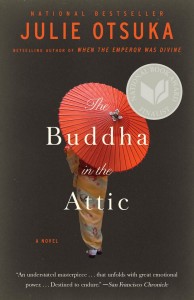
“Just the right length, the perfect amount of general and specific, and no solid story but yet the story that so many people in the United States—and elsewhere—can tell about hope, and heartbreak, and the ways in which lives change that most of us never intend or imagine.” (Knopf)
By Liz Mathews (Hiroshima-ken, 2005-06) for JQ magazine. Liz is the JETAA New York Book Club wrangler.
I would like to start by saying that the JETAANY Book Club discussed reading Julie Otsuka’s The Buddha in the Attic for at least five months before choosing it for our fall meeting. This is notable because 1) we were right in our primary reason for putting it off; and 2) we were even more right in finally selecting it to read. It’s easy to explain the first note: Over the summer we thought it best to opt for a lighter, more beachy read, and not a novel about Japanese “picture brides” and their distressing existences in the United States of the early 20th century.
As for the second point, autumn and its colder, shorter, darker days did turn out to be a much more appropriate setting to read Otsuka’s carefully composed novel. Otsuka wrote her book in eight sections, writing mostly from the perspective of the women—the women as a united “we”—who came across the ocean to a new life of false promises, how they endured meeting their husbands the first time, how they got along (or didn’t) with their employers and new fellow countrymen, and what happened as a new, Japanese American generation grew.
For all the suffering in those first five sections, there is hope written between the lines. Hope for a new life with a wonderful husband, hope that hard work will pay off in acceptance, and hope for their children in that, as one of the paragraphs ends, “Whatever you do, don’t end up like me.” But then, as one club member put it, “You come to this country, you work your ass off, you think you’re getting somewhere…and then you don’t” (referring to the war’s outbreak).
When we got together to discuss The Buddha in the Attic, we spent a fair amount of time talking about the perspective the story was written from—first person plural—and how initially we didn’t like it, but then either grew accustomed to it or could at least appreciate it as a tool. One attendee stated, “Everyone’s situation is different. You can’t even generalize the Japanese experience.” Another pointed out, “[Otsuka] has a new story in every sentence.” We laughed a little at this realization, probably as all our thoughts turned back to our own departure orientations, when we were constantly told those very same things.
Roland Kelts Praises the Who’s Pete Townshend in ‘The New Yorker’

Roland Kelts, left: “When I published my first book, Japanamerica, about the odd synchronicity between two societies, Japanese and American, at once at great odds and suddenly allies, my publisher asked me to send the book to Pete Townshend. He had asked for it, why not give it to him?”
Courtesy of JETAA Northern California’s Mark Frey (Kumamoto-ken, 2002-06):
In a new article by JET alum Roland Kelts (Osaka-shi, 1998-99) on Pete Townshend in The New Yorker, Kelts references his book Japanamerica—of which Townshend said “I love that book!” to JQ magazine editor Justin Tedaldi at an NYC signing yesterday for his new memoir Who I Am—at the end of the article and offers some thoughts contrasting the experience of artists in the U.K. and Japan after World War II.
I first met Pete Townshend fifteen years ago in a modest London hotel suite. I was there with my friend Larry David Smith to interview Townshend for Smith’s book, “The Minstrel’s Dilemma.” We were already seated inside when I looked out the first-floor window and saw Townshend pulling into the parking lot.
He arrived alone, sans entourage or fanfare, driving himself in a gray Mercedes station wagon. Minutes later, the knob on the suite door rattled and shook. I stood, thinking that it might be a member of the hotel staff and wondering if I should turn the knob from our side. There was a pause, then more rattling, then the door swung open and Townshend burst through, eyes wide with exertion. He had apparently been trying to pull when he should have pushed.
We were scheduled to meet for two hours, but Townshend was unstoppable, regaling us not with stories of rock debauchery, but a stream of complex, sometimes half-formed ideas about popular culture, history, and human psychology. We were told not to ask him about his failing marriage; he immediately addressed it, confessing to a jolt of sadness while shaving that morning. “Don’t mention Keith Moon,” wrote his personal assistant via fax. “I never properly mourned for Keith,” he soon said, unprompted, and through tears.
For the complete story, click here.
JQ Magazine: Book Review – ‘Salvation of a Saint’
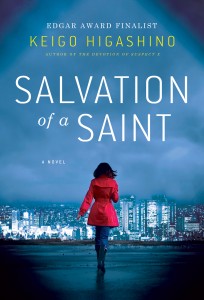
“The detectives in ‘Salvation’ are in constant motion, interrogating suspects, racking their brains for a break in the case. Insomniacs, they observe, question and theorize with an obsessive resolve, as good fictional crime detectives are apt to do.” (St. Martin’s Press)
By Sharona Moskowitz (Fukuoka-ken, 2000-01) for JQ magazine. Sharona is interested in fresh, new voices in fiction and creative nonfiction.
(Click image for an exclusive sample from the audiobook)
With more twists and turns than a mountain route through the Japanese Alps, Keigo Higashino’s latest murder mystery Salvation of a Saint is a seamless, well-constructed suspense novel with all the elements of a classic murder mystery, though he adds considerable fizz to the formula with a few unconventional characters and a very unlikely murder technique.
Yoshitaka is the unfortunate victim, poisoned early on in the story by arsenic laced coffee which he drinks with tepid oblivion. Despite being offed so soon, throughout the novel we learn quite a bit about him as his character is constructed in fragments that piece together to tell the story of his life.
And what an unsavory fellow indeed.
Narcissistic, duplicitous and with a chauvinistic tendency to view women solely in terms of their reproductive potential, Yoshitaka is not terribly likeable, to put it mildly. During the time of his murder he was in the process of leaving his wife Ayane because of her inability to bear him a child, a fact which he states openly with unabashed grandiosity. He was also, conveniently for the plot, in the midst of an affair with Ayane’s trusted confidant and apprentice Hiromi.
So whodunit? Was it a crime of passion committed by one of Yoshitaka’s jilted lovers past or present? Perhaps a jealous colleague? Or were Ayane and Hiromi secretly in cahoots?
JET Author Beat: Current Okinawa JET debuts with new book “Samurai Awakening”
Benjamin Martin is a fifth-year JET ALT in Okinawa Prefecture. He spent three years on Kitadaito Island, a place of 12 sq km and 550 people before moving across the prefecture to another island called Kumejima. His debut novel Samurai Awakening is out now on online retailers and hits bookstores October 10, 2012. Benjamin competes in Okinawan Sumo, is co-host of FM Kumejima’s weekly Haisai English radio program, writes the blog More Things Japanese and serves as an occasional plaything for elementary school students.
About Samurai Awakening and Benjamin Martin
Samurai Awakening is a Young Adult fantasy that takes place in Japan. I began writing it as a way to bring aspects of Japanese culture to young westernersas a compliment to what we do on JET. Overall, it’s a fun read with aspects of Japanese mythology derived from The Kojiki and a healthy dose of real Japan as seen during my time teaching kindergarten through junior high. Here’s the official description:
David Matthews is having a particularly bad day, after an especially bad month. His first weeks as an exchange student in Japan have left him homesick and misunderstood by nearly everyone around him, even his host family! Beaten down by a month of loneliness and bullies at school, a fateful invitation to the local Shinto shrine sends David on a path no foreigner has experienced before.
After awakening with a newfound ability to speak Japanese, David learns the members of the Matsumoto family are far more than just traditional sword smiths. They are the keepers of ancient secrets, and a task set upon them by the first Emperor- to train new Jitsugen Samurai, protectors of Japan.
When more strange things begin happening to David, he discovers his future is tied to a Japanese god within him, and that to be a Jitsugen Samurai holds consequences he may not survive. With his new family, friends, and a reluctant ally, David must fight against dangers far closer than any of them realize. As students disappear, David must overcome his past, and accept a new and uncertain future in time to stop the lurking darkness threatening Japan.Why Write?
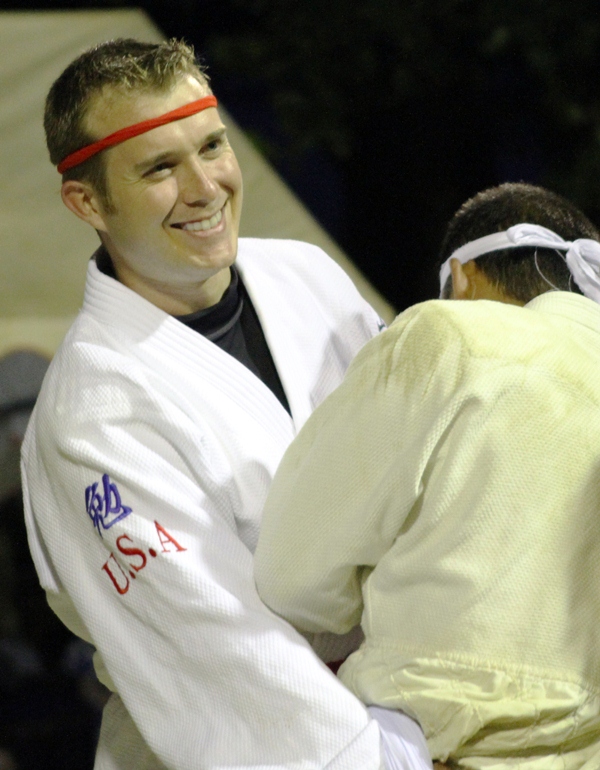
I started writing as a way to share my experience on JET. My photography and writing skills have grown in tandem since I began my blog More Things Japanese in 2010. I had read Sir Basil Hall Chamberlain’s Things Japanese at the University of Arizona, and wanted to recreate it for today. It became a way to share the unique aspects of Japan I see every day with the world.
The two projects complement each other. The blog lets me focus on non-fiction without having to worry about huge amounts of research. I can simply share what I see, while my novels provide a chance to explore the question, “What if The Kojiki is more than mythology?”
JET has been an amazing experience, and writing gives me a chance to give back and continue to promote the ideals of cultural exchange. I left the US for Japan with a degree in Business and an interest in Japan. Now I have found just how amazing this country can be, and learned a lot about myself I had not known before.
Join the Awakening.
Enter to win a free copy of Samurai Awakening. http://morethingsjapanese.com/samurai-awakening-is-here/ Contest ends 10/10/2012. Alternately you can support my blog and novel by purchasing a copy from your favorite bookstore or online vendor. Thank you!
JET Alum Author Beat: Nicholas Klar’s “My Mother is a Tractor” now free on Kindle for a limited time
JET alum Nicholas Klar’s (Niigata-ken, Omi-machi (now Itoigawa-shi), 1995-97) My Mother is a Tractor: A Life in Rural Japan, originally published in 2006, is now available for free on Kindle for the next couple days. Click here for more details.
Here’s some more info about the book:
Less than six months after chucking in his management job to take up teaching Nicholas Klar finds himself on the JET Program and a plane to Japan – ending up as an ALT teaching English in Omi (now Itoigawa City) in the far reaches of rural Niigata prefecture.
Never one to be taken too seriously he spends two years far beyond the beaten tourist path in often carousing encounters with Elvis impersonators, love hotels, toilets, train schedules, cults, hostess girls, freezing weather, the local garbage-man and postal workers, plus the recording of a bizarre incident where a cow apparently falls out of the sky.
Combining humour, wonder and a good deal of eclectic research the author veritably crams his pages chock-full of tales of culture shock, humorous anecdotes and insights, reflections upon his own life and cultural baggage, strange facts, plus cultural incongruities and marvels. He inevitably falls in with a motley crew of acquaintances along the way and revealed are many of the personalities he encounters – both Japanese and foreigners.
My Mother is a Tractor is rollicking, fact-filled ride through the Land of the Rising Sun that will both amuse and inform.
JQ Magazine: Inside the JETAA New York Book Club

The JETAA New York Book Club with August’s selection, “The Thousand Autumns of Jacob de Zoet” by David Mitchell.
By Greg Anderson, (Fukuoka-ken, 1990-92) for JQ magazine. Greg is part of the fourth class of the JET Program, which began in 1987. He is currently employed as an auditor with the U.S. Treasury Department and is a new member of the JETAA New York Book Club.
Gone are the amazing, fascinating, fast-paced days of life in Japan filled with culture shock. As JET alums, most of us are employed in vocations that have no connection to Nippon at all. Ask yourself this question: After you have successfully completed another week or day at work, what do you have to look forward to? If you’re job hunting, then you have experienced another week of success/failure, but next week holds new opportunities. If you have children, you can look forward to screaming demanding creatures that we all love but sometimes drive us crazy. If you don’t have children, you may have an annoying spouse, boyfriend or girlfriend who has never been to Japan, has no interest in Japan, and wishes that you would get over your preoccupation with it and grow up. Once a JET, always a JET!
The JET experience transforms all who participate in the program; you will never be the same again. What can you do when you miss the connection to Japan? Besides going to Sapporo Ramen (located on 152 West 49th Street), you can attend a JET book club meeting. Every other month, JET alumni and others interested in Japan get together to discuss a Japan-related book over a nice relaxing glass of wine, soda, or water (but feel free to bring your choice of beverage). It does not end there! The hors d’oeuvres provided are smashing, and at a mere two to three dollars are a better bargain than McDonald’s. Participants also have the option of bringing goodies to supplement the menu, and you never know what surprises to expect.
The book club was started about three years ago, by two enterprising JET alums, Jessica Langbein and Michael Glazer, who suggested that JETAANY should have a book club. In fact, when the club first started, the meetings were held at the home of another JET, Katrina Barnas. The genesis of the book club was neither Japan nor the JET Program, but began as a college major. Jessica was a Japanese literature major in college and as a JET alumna was seeking some literature that would pique her interest. It was suggested to her that she speak to fellow alumnus Michael, and over a cup of coffee the JETAANY Book Club was born. Facebook was used to recruit new members.
JQ Magazine: Book Review – ‘Heart of a Samurai’
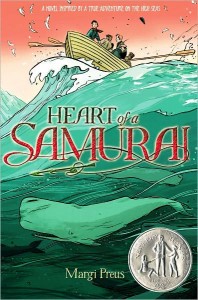
“Many people join the JET Program looking to form international bonds between their home countries and Japan, but Manjiro Nakahama faced bigger challenges into trying to end Japan’s isolationist policy. ‘Heart of a Samurai’ gives you a fun glimpse of one of Japan’s most important historical figures.” (Abrams)
By Rashaad Jorden (Yamagata-ken, 2008-2010) for JQ magazine. Rashaad worked at four elementary schools and three junior high schools on JET, and taught a weekly conversion class in Haguro (his village) to adults. He completed the Tokyo Marathon in 2010, and was also a member of a taiko group in Haguro.
You might know that under the policy of sakoku, no Japanese were permitted to leave the country. So when Japanese people were finally able to do so, it must have been a fascinating story. And thanks to Margi Preus, people have an easy-to-read tale about one of the first Japanese to venture outside of the country’s borders.
Preus’ book Heart of a Samurai offers a look into the life of Manjiro Nakahama, a fisherman-cum-aspiring samurai whose life is turned upside down when his boat is shipwrecked during an 1841 fishing trip. He and his four comrades are stranded on a remote island until members of an American whaling vessel arrive.
It was aboard the John Howland that Manjiro first learned about a world previously foreign to him. Unlike his comrades, the ever-inquisitive Manjiro is not scared of “butter stinkers” (a derogatory term for foreigners) and he learns English so quickly, he forms a bond with ship captain William Whitfield. Whitfield eventually takes Manjiro back to the United States, where the young man lives with the captain’s family. After spending several years exploring the world by sea, Manjiro eventually returns to Japan to accomplish his goal.
This book will resonate with people because it addresses the theme of being shocked at the world’s differences—some of which are hilarious (Aboard the John Howland, Manjiro is stunned by the existence of buttons, pockets, forks and knives while later expressing similar astonishment by seeing men wearing watches) and some that are not so funny (Manjiro is stunned to see segregation in a church). And in addition to adjusting to a culture where everything seemed to changing, Manjiro must also tackle racism and a new language while working to prove himself to people in a new country.
Justin’s Japan: Interview with ‘Speed Tribes’ Author/JET Alum Karl Taro Greenfeld
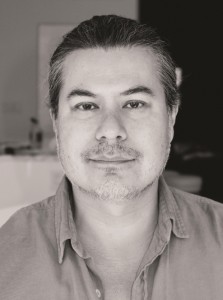
“From being born in Kobe and spending time in Japan as a child, I had a decent feel for Japanese culture and even a little bit of the language. But what best prepared me for the JET Program was living in Paris during my junior year in college; that familiarized me with living in a foreign country and how one had to adapt, especially back then in pre-Internet times.” (Esmee Greenfeld)
By JQ magazine editor Justin Tedaldi (CIR Kobe-shi, 2001-02) for Examiner.com. Visit his Japanese culture page here for related stories.
Born in Kobe and raised in America, Karl Taro Greenfeld (Kanagawa-ken, 1988-89) is the author of six books, and over the past two decades his writing has graced everything from the Paris Review to Playboy to Time Asia (where he served as editor for two years). His first book was Speed Tribes: Days and Nights with Japan’s Next Generation, a gritty, true-life portrait of Tokyo’s urban underground. Published in 1994, it exposed a fascinating side of post-bubble Japan rarely seen (or reported by) foreigners.
Now living in Tribeca with his wife and two daughters, Greenfeld has recently penned his debut novel, Triburbia, which once again finds a muse in his current milieu. The New York Times calls it “an artful and casually cohesive work of fiction imbued with anthropological insight,” and Greenfeld will be appearing at an author event at (where else?) Barnes & Noble Tribeca on Sept. 5.
In this exclusive interview, I spoke with Greenfeld about his early days in Japan during its economic peak, his highlights as a journalist covering the nation’s subculture, and a never-before-told story about the fate of a planned Japanese-language release of Speed Tribes.
Triburbia is a story about Tribeca fathers at the end of the last decade facing a changing neighborhood, which is similar to your own life. What made you to decide to write a novel about this?
I was living in Tribeca and then we moved to Pacific Palisades, California for a few years, and that caused me to look back at Tribeca and think about that time and place. It’s very similar to how I wrote Speed Tribes after moving from Japan back to the U.S. Somehow, when I am living in a place the intensity of experience makes it hard to write about. But with the perspective of distance, ideas come into focus and I can get a better idea of what I want to say about a place.
At 23, you served on the JET Program in Kanagawa Prefecture from 1988-89. How did JET come on your radar, and what kinds of jobs did you have before that?
I don’t remember how I heard about JET. I think it was something my mother found out about and passed on to me through her contacts at the Japanese Consulate in Los Angeles. Before that I was working in a clothing store and was just starting to write for magazines. I’d had small stories in the New York Times and Harper’s Bazaar and I already knew that’s what I wanted to do. But then I was accepted into the JET Program, which turned out to be a lucky break because it got me to Japan, though further from Tokyo than I would have liked.
You were born in Kobe, grew up in Los Angeles and went to college in New York. How did this exposure to different cultures and lifestyles prepare you for your time on JET?
From being born in Kobe and spending time in Japan as a child, I had a decent feel for Japanese culture and even a little bit of the language. But what best prepared me for the JET Program was living in Paris during my junior year in college; that familiarized me with living in a foreign country and how one had to adapt, especially back then in pre-Internet times. I remember getting theJapan Times every day and that was my only connection to what was going on in America, a few baseball results—they didn’t print box scores—and maybe a few AP stories picked up about Bush or Dukakis. That was it!
How about being perceived as “half-Japanese” or “Asian” during your time in Kanagawa?
I think being half-Japanese was actually a disadvantage in the JET Program. For one thing, when Japanese kids hear they are getting a foreign teacher, they want a foreign teacher: A tall, strapping, blonde, preferably female, would be ideal. When I showed up, looking Japanese, I think it was a little bit of a disappointment. Never mind how lousy a teacher I actually was.
What were the biggest life lessons you picked up from JET? How about from that first year from working in Japan?
I learned a few things: For one, I learned that I shouldn’t confuse loneliness and happiness. That sometimes, I could be very lonely, and for the first six months or so in Kugenuma, where I lived in Kanagawa, I was intensely lonely. But I was strangely productive. I wrote a novel (never published), read a few hundred books, and had a lot of time to think about writing and what I wanted to say. It was the first time in my life that I wrote every day for a year.
For the complete interview, click here.
JQ Magazine: Book Review – ‘Orchards’ Is Elegant, Powerful, Profound

“‘Orchards’ is at once a celebration of life and a somber reflection on the choices we make and their often irrevocable consequences.” (Random House)
By Sharona Moskowitz (Fukuoka-ken, 2000-01) for JQ magazine. Sharona is interested in fresh, new voices in fiction and creative nonfiction.
Meet Kanako Goldberg. Half Japanese, half Jewish, the teenage narrator of Holly Thompson’s breathtaking 2011 novel Orchards is more bagels and lox than natto and rice. After the suicide of her classmate in New York, Kanako is sent by her Japanese mother to spend the summer with her relatives on their mikan farm in a rural village tucked beneath the shadows of Mount Fuji. The trip to Japan is not only a chance to bond with her Japanese kin, it’s something of a temporary exile, a time to reflect on her life and her classmate’s untimely death at a safe geographical remove.
The victim’s name was Ruth and she is evoked repeatedly throughout the novel in the second person, as if to haunt the reader as much as she seems to be haunting Kanako’s conscience. Who was Ruth? What exactly was the extent of her suffering and how long did she have to endure before making the desperate decision to take her own life? Slowly we learn about Ruth’s battle with bipolar disorder and the unfortunate events that prompted her to do the unthinkable.
Despite her remorse, Kanako was not exactly the bully. She was more of a neutral bystander neither provoking nor defending the tortured teen, though in retrospect she feels just as culpable as Lisa, Ruth’s lead tormentor. (Lisa’s own fate, which I won’t give away here, adds an unexpected twist to the story.)
The tragic event took place in an apple orchard, a place where the cycle of death and rebirth is in plain, colorful view. While this metaphor might seem forced or terribly obvious, so elegant is Thompson’s language and so powerful and gentle her analogies that the overall effect is profound and genuinely moving.
JET alum Lars Martinson publishes “Kameoka Diaries Volume 2” e-comic
Lars Martinson (Fukuoka-ken 2003-2006), author of the graphic novels Tonoharu: Part Two andTonoharu: Part 1, has just published the Kameoka Diaries Volume 2. This is a follow-up to Kameoka Diaries Volume 1, Lars’ insightful and entertaining (especially to any JETs) e-comic about his return to teaching English, this time in Kameoka, Kyoto.
Notably, you can purchase a copy for $0.99 for iPhone/iPad/iPodTouch or pay $1 for a PDF version for Mac/PC/Android/whatever.
More info here and below: http://larsmartinson.com/kameokadiaries2-now-available/
In Lars’ words:
When I submitted my first e-comics to Apple, ( The Kameoka Diaries: Volume One and Young Men of a Certain Mind ) it took one month for them to get approved, so I’m surprised & delighted it only took two days this time. But hey, I’m not going to look a gift horse in the mouth!
I’ll write more about the new volume of The Kameoka Diaries soon; I just wanted to get this announcement blog entry out right-away.
So please check it out. And if you enjoy it, please consider writing a review on iBooks, and/or telling your friends, and/or tweeting about it, and/or “liking” it on Facebook. Thanks a bunch!
JETwit Note: I just downloaded a copy onto my iPhone as soon as I saw the announcement. Volume 1 was great, even on an iPhone screen.



